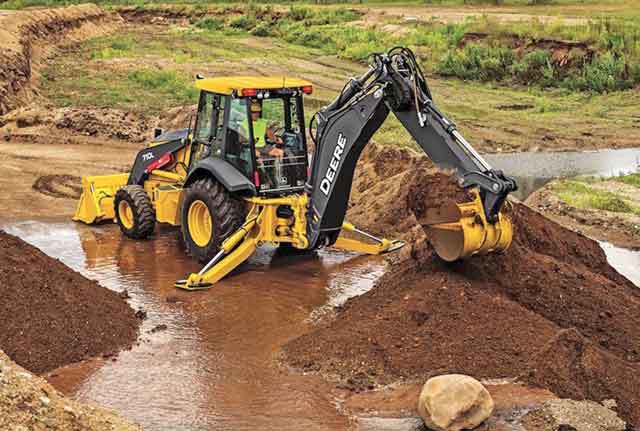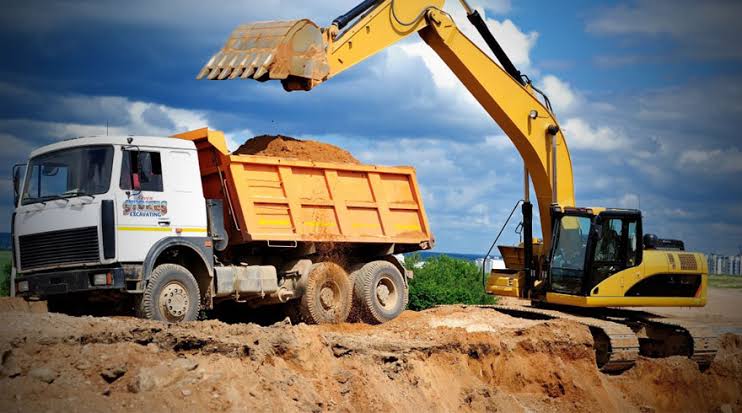Expert Septic Ohio - Relied On Septic Tank Experts in Ohio
Expert Septic Ohio - Relied On Septic Tank Experts in Ohio
Blog Article
Introducing the Art of Excavation: Pro Tips for Safe and Efficient Excavating
As dirt is transformed and planet is relocated, the intricacies of excavation disclose themselves, demanding an eager understanding of tools, dirt structure, safety methods, and environmental factors to consider. The experience needed to navigate these components effectively can imply the difference between an effective excavation task and a potential disaster.
Value of Proper Equipment
To ensure the safety and security and performance of any excavation project, making use of the proper devices is vital. The right devices not only boost performance however likewise reduce risks connected with digging. Excavation tasks vary in range and complexity, varying from little residential landscape design tasks to large-scale construction tasks. Despite the job dimension, having the appropriate devices can make a significant difference in the outcome.
Excavators are basic pieces of machinery in any type of digging operation. These versatile machines been available in various sizes to suit various job requirements. Miniature excavators are perfect for smaller sized jobs, while bigger excavators deal with much more extensive jobs effectively. Backhoes are another crucial tools kind, incorporating the functions of a loader and an excavator in one maker. They are important for tasks calling for convenience and maneuverability.
Aside from excavators, other crucial tools consists of dump vehicles, excavators, and trenchers. Unload trucks are essential for getting rid of and transferring excavated materials, while plates are utilized for excavating deep and narrow trenches. Bulldozers master tasks that call for pressing huge amounts of soil or particles. By investing in the proper tools, excavation tasks can be completed safely, on time, and with precision.
Comprehending Soil Composition
A detailed grasp of dirt make-up is essential for carrying out excavation projects with accuracy and security. Recognizing the various sorts of dirt is crucial as it straight impacts excavation methods, tools option, and total job effectiveness. Soil structure usually includes 4 main components: sand, silt, clay, and organic matter. Each element has one-of-a-kind homes that affect how soil reacts to excavation processes.
Silt particles are smaller sized than sand however larger than clay, providing moderate drainage and cohesion. Organic issue, such as decomposing plant material, affects dirt fertility and security.
Before beginning excavation, conducting soil tests to determine its make-up and qualities is important. This info helps in selecting the suitable equipment, applying precaution, and developing excavation strategies customized to the specific soil conditions - lancaster excavation. By recognizing soil make-up, excavation experts can boost task end results while making sure safety and adherence to finest techniques
Safety Procedures and Protocols
Recognizing soil structure is the cornerstone upon which precaution and protocols for excavation jobs are constructed, guaranteeing the health of workers and the success of the endeavor. There are numerous crucial measures that need to be applied to mitigate dangers and stop crashes. when it comes to security throughout excavation.
Primarily, before any type of excavating starts, a detailed evaluation of the site need to be conducted to determine any kind of potential hazards such as underground energies, unstable dirt problems, or neighboring frameworks that could present a threat. It is vital to have a qualified individual oversee the excavation procedure to guarantee that all security procedures are complied with purely.
Moreover, all workers included in the excavation needs to be properly learnt risk-free excavating practices and the proper operation of tools. Individual protective equipment (PPE) such as tough hats, high exposure garments, handwear covers, and safety and security boots should be used whatsoever times to decrease the threat of injuries. lancaster trenching. Routine safety and security conferences and tool kit talks should also be conducted to keep all workers informed regarding prospective risks and strengthen risk-free work methods. By adhering to these security procedures and methods, excavation tasks can be finished successfully and without case.
Effective Excavation Planning
When embarking on an excavation project, precise planning is necessary to guarantee efficiency, look at this site safety, and effective outcomes. Effective excavation preparation includes several vital actions that are vital for the smooth implementation of the job. The very first step is to perform a thorough website assessment to identify any kind of prospective hazards, such as below ground utilities or unpredictable soil conditions. This details is essential for establishing a comprehensive excavation plan that consists of security actions and take the chance of mitigation strategies.
Once the website analysis is complete, the following action visite site is to create a clear timeline and timetable for the excavation tasks. This consists of determining the series of jobs, tools requirements, and workforce allocation. Appropriate organizing aids prevent hold-ups and ensures that the task remains on track.

Additionally, interaction among all team members is extremely important throughout the preparation phase. Clear directives, regular updates, and efficient sychronisation are vital for a successful excavation project. By investing time and effort in meticulous planning, excavation teams can substantially boost performance, decrease dangers, and achieve successful outcomes.

Managing Environmental Considerations
With raising focus on environmental sustainability in building and construction practices, managing ecological considerations has actually ended up being an important facet of excavation jobs. wikipedia reference Excavation activities have the possible to affect the surrounding setting with soil disintegration, sediment overflow, habitat interruption, and contamination of water sources. To minimize these risks, it is important to carry out ideal methods that prioritize environmental management.

Furthermore, proper waste management is vital to avoid soil and water contamination. Implementing procedures for the disposal of hazardous products, recycling of waste products, and minimizing using harmful chemicals can significantly reduce the environmental influence of excavation tasks. By incorporating these methods right into excavation planning and execution, building business can make sure that their jobs are not just secure and effective however likewise environmentally responsible.
Verdict
To conclude, understanding the art of excavation needs a complete understanding of proper tools, soil structure, precaution, and reliable planning. By adhering to these guidelines and considering ecological elements, excavations can be conducted securely and effectively. It is essential to focus on security and productivity in every excavating job to guarantee effective results.
As dirt is turned and earth is moved, the ins and outs of excavation expose themselves, demanding an eager understanding of equipment, dirt composition, safety and security protocols, and environmental factors to consider.To make sure the safety and effectiveness of any excavation job, utilizing the proper tools is vital.A comprehensive understanding of dirt structure is basic for performing excavation jobs with accuracy and security. Recognizing the different types of dirt is essential as it straight influences excavation techniques, tools selection, and general task efficiency. By comprehending dirt composition, excavation professionals can boost job results while making certain safety and adherence to ideal practices.
Report this page